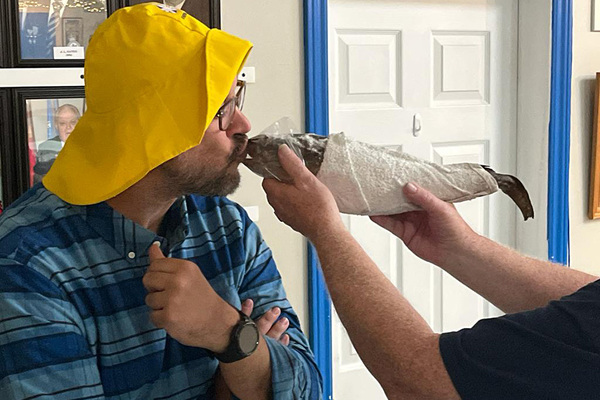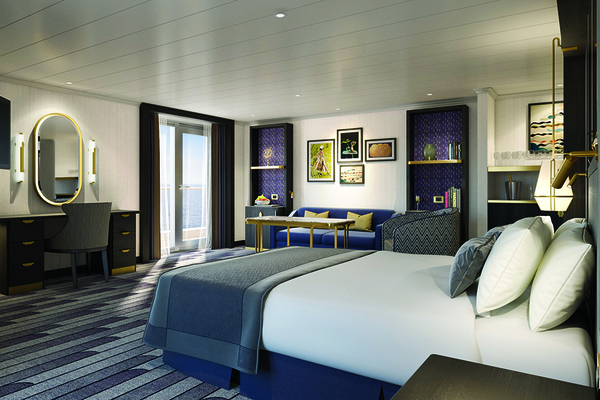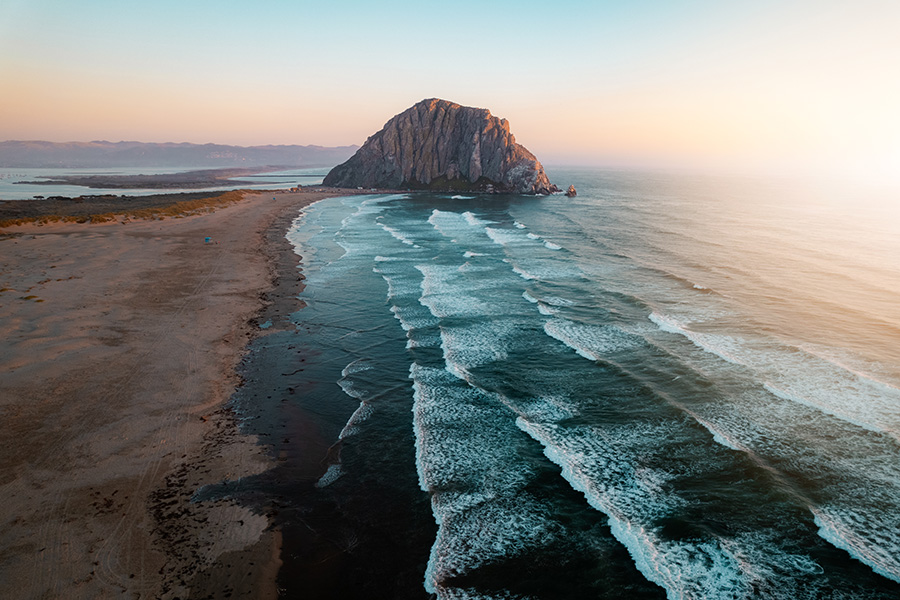Dinosaurs: A roaring trade
Twenty-two years after Spielberg’s first Jurassic Park hit the big screen, the fourth part in the dinosaur action thriller series was released this summer. Lizzie Andrews discovers how fossil-rich Alberta is benefitting from a fresh wave of dino-mania
Photo credit: Rex Features
Visitors to the Canadian province of Alberta will have heard of the Calgary Stampede and Rocky Mountains, but fewer might realise it has a huge wealth of dinosaur fossils.
Since the first skeleton was found by geologist Joseph B Tyrell in 1884, more than 400 named skeletons and tens of thousands of bones have been found.
Alongside Argentina and China, Alberta is in the world’s top three places for Late Cretaceous dinosaur fossils, thanks to its geological conditions: wet and swampy during the Cretaceous period (145 million years ago) and now dry, meaning that countless dinosaurs were preserved in its riverbeds and their remains are now being unearthed in dry river valleys.
A “fossil trail” spans 1,550 miles from north to south across Alberta (see map) with highlights including the town of Drumheller and its Royal Tyrrell Museum, the Unesco Dinosaur Provincial Park in the Canadian Badlands, and the Philip J Currie Dinosaur Museum in Wembly in the northern Grand Prairie.
Alberta has long attracted dinosaur enthusiasts, and it has also influenced movies like the Jurassic Park series. The first film, based on the novel by Michael Crichton, was released in 1993 and was followed shortly after by The Lost World: Jurassic Park in 1997 and Jurassic Park III in 2001. The fourth installment had been keenly awaited, but fans were rewarded this summer with Jurassic World, in which chaos ensues when the hybrid dinosaur, Indominus rex, breaks free.
It’s partly owing to the Jurassic Park series that dinosaur-related attractions in Alberta have had such success, and the industry agrees that dino-mania is on a new high following the latest film.
Canadian tour operator Anderson Vacations reports that the movie has inspired a fresh wave of visitors. “Children in particular just love dinosaurs at the moment and Alberta’s attractions are excellent for families,” says its UK representative Anne Holmes.
The potential of the market is also significant. Travel Alberta recently conducted a survey in the UK in which 60% of respondents agreed they have a fascination with dinosaurs, and a quarter of children classified themselves as “dinofanatics.”
Key sites and attractions for dinomaniacs include the following:
Drumheller
Drumheller lies in the heart of the Canadian Badlands, an hour and half’s drive from Calgary.
In 1884, the “Albertasaurus” was discovered there by geologist Joseph Burr Tyrrell and was later found to be a cousin of T-rex. Tyrell’s discovery led the great dinosaur rush and Drumheller prospered as a destination for leading research scientists.
Drumheller has decorated its streets with dinosaur-shaped bins, signs and shops selling memorabilia, and it owns the world’s largest dinosaur statue, standing at 26 metres tall: visitors can climb it to view the Canadian Badlands.
In June, Drumheller added another discovery to its collection, the ‘Regaliceratops peterhewsi’. The previously unknown dinosaur is dubbed Hell Boy (after the cartoon character) for its horn-like feature. Hell Boy, a meat-eating dinosaur, has attracted as much attention as T-rex in the dinosaur community. It is on display at the Royal Tyrrell Museum of Palaeontology, not far from Drumheller.
The Royal Tyrrell Museum
The Royal Tyrell museum opened in 1985. Its exhibitions and educational programmes immerse the public into a 3.9 billion-year history of life on earth. It is home to 160,000 dinosaur specimens and adds more each year.
Don Birkman, director of preservation and research, says: “Dinosaurs are abundant in Alberta and still eroding out of land banks. We can continually go back to places we have been previously and find new specimens. In the past decade, we have typically collected one or two skeletons a year.”
Highlights include “Lords of the Land”, a complete dinosaur fossil of a 13.7 metre T-rex, while Dinosaur Hall features the world’s largest displays of dinosaur bones. The Royal Tyrrell welcomed more than 404,000 visitors from 125 countries in 2014. This year has been its busiest for two decades.
Unesco Dinosaur Provincial Park
This Unesco World Heritage Site is an unrivalled place to find fossils of every known dinosaur group and has 150 complete dinosaur skeletons.
There are day or overnight tours and Alberta Parks Authority offers two-day excavation programmes in the summer season for visitors to take part in a dig. The tour, led by a paleontological technician, costs £250pp for three nights including accommodation and food, and visitors are very likely to find a fossil, thus contributing to ongoing research at the museum. However, the rating of the programme is difficult and not recommended for everyone.
Anderson Vacations offers a one-night visit from Calgary to Drumheller and the Badlands. Anne Holmes suggests hiking and bus tours around the park – which can only be prebooked with Alberta Parks Authority.
Philip J Currie Museum Dinosaur Museum
A new dino-museum opened this year at the height of the Jurassic World hype. The Philip J Currie Museum, in Wembly in the Grand Prairie, is located in an area the size of several football fields where many bones have been found, called Pipestone Creek.
The museum offers summer tours to the Pachrhinosaurus lakustai bonebed, named after the species of dinosaur and paleontologist who found three in the area in 1975. It is now the world’s densest bonebed, averaging 200 fossils per square metre (most bonebeds average 10-50 fossils per square metre).
Pipestone Creek helicopter tours are also offered by the museum. They cost £97pp plus park tax. IPads in the helicopter pinpoint the important geological and paleontological areas on the ground.
The main gallery, dedicated to the Cretaceous period, displays five newly named dinosaurs never presented to the public before. The museum’s fossil lab is designed to immerse visitors into a virtual dinosaur environment. Visitors can look at CGI screens which pan over dinosaur skeletons to flesh out the bones.
According to the Grande Prairie Regional Tourism Association, it is hoped the new museum will bring $4 million annually to Alberta’s economy, and $2.5 million to the Grand Prairie region.
60 seconds with...David Lloyd leads the dig programmes at Dinosaur Provincial ParkWhat is an excavation programme? We have one, two and three-day guided excavation programmes. They are an opportunity for the public to participate in an authentic excavation in a dinosaur bonebed, using the same tools and techniques as palaeontologists, and mapping and collecting fossils. The programmes are run in one of the ceratopsian bonebeds in the protected area of the park, called the Natural Preserve.
Who is it for? The minimum age for the programme is 14. We also have students looking to gain experience for programmes they are pursuing in university. Accommodation is included with the multi-day programmes. For single days, visitors can book a campsite or a comfort camping unit and there are hotels available in the nearby town of Brooks.
How readily can dinosaur fossils be found in the park? Dinosaur fossils can be found very easily in most areas of the park. They are harder to find in our publicly accessible areas because some visitors break park rules and pick fossils up. The fossil-bearing layers are found in the publicly accessible and protected areas, but in the protected areas they are more abundant. This is why admission into the protected areas of the park is with park staff only.
How do visitors help the scientific research? The fossils that are mapped and collected with the help of the public through the guided excavation programme go to the Royal Tyrrell Museum of Palaeontology, where they are curated and available for research. The main focus right now is looking at variation within ceratopsian (horned dinosaur) skulls. Because bonebeds contain a large number of individuals of different ages, they can help to answer questions that require lots of data, such as variation within a species or how individuals changed as they grew. |
















